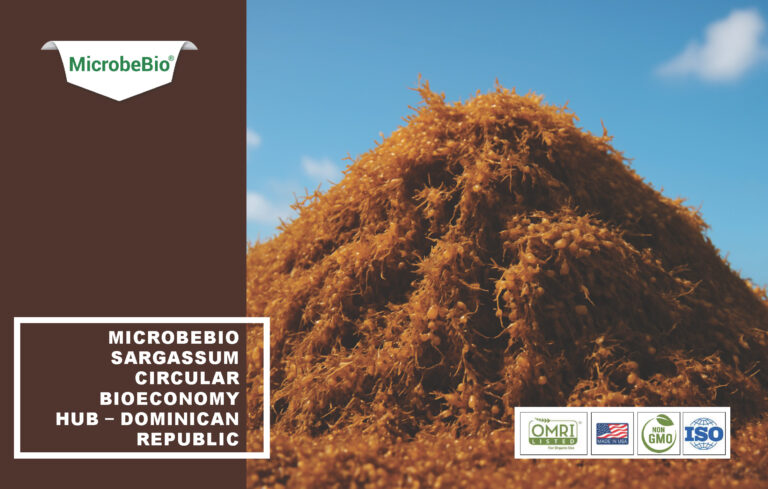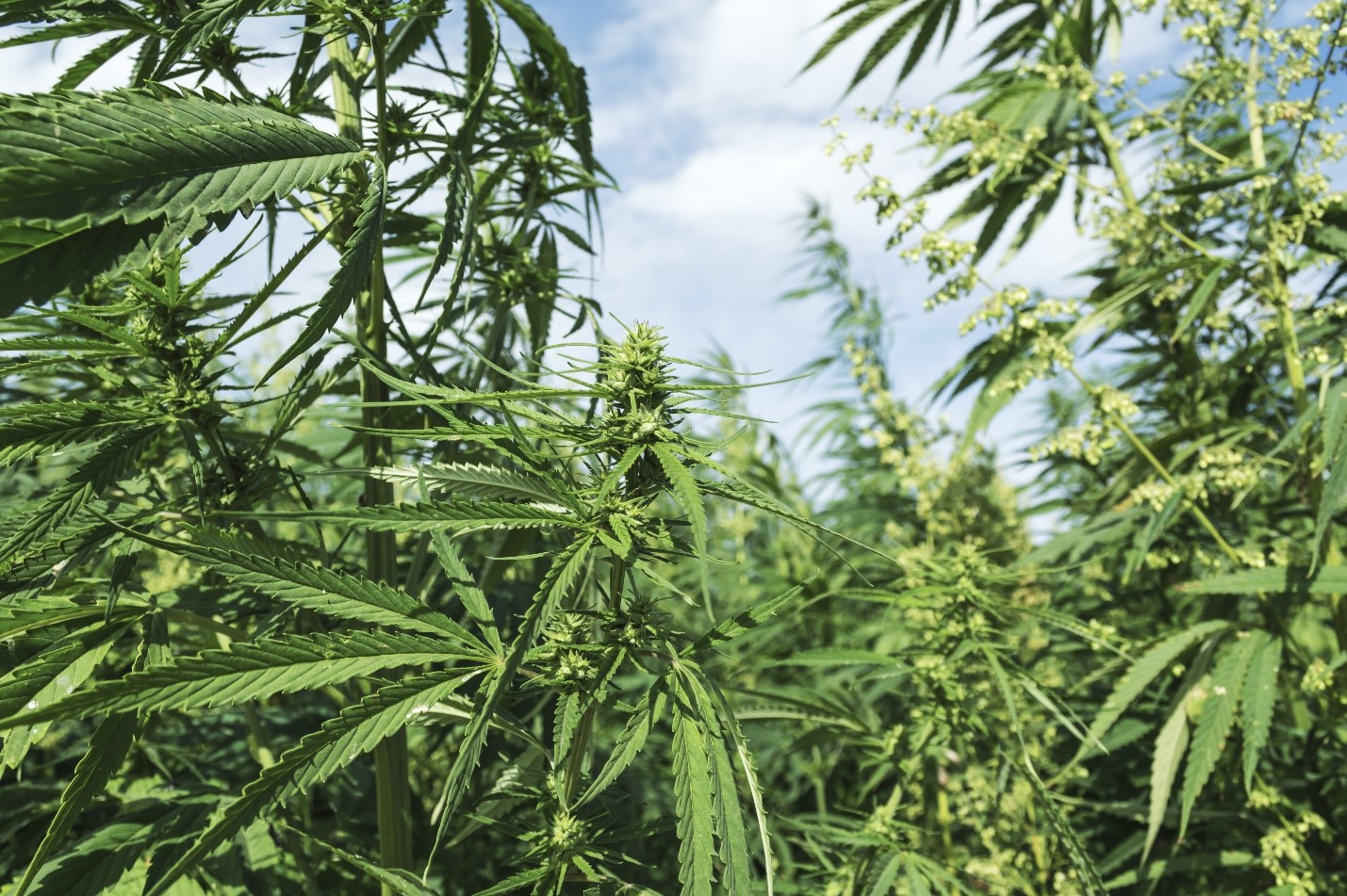Comprehensive Proposal for Geodyn Solutions: $25M Hemp Processing Factory for Paper Goods in Bourbon County, Kentucky, USA, with ROI Comparison to Dominican Republic
Geodyn Solutions proposes to build a $25M hemp processing factory in Bourbon County, Kentucky, to produce 50,000 tons/year of paper goods, including cardboard (20,000 tons), packaging material (20,000 tons), and premium specialty writing paper (10,000 tons), sourcing 30,000 tons/year of hemp fiber from local farmers through partnerships with the Kentucky Department of Agriculture, landowners, or cooperatives. A comparable factory is evaluated for the Dominican Republic (Santo Domingo Free Zone) to compare ROI. Both facilities will use advanced proprietary and partner technologies, purchase electricity from utility companies, and share profits 70% to Geodyn and 30% to partners, with partners contributing 30% of CapEx ($7.5M) for a 30% ownership stake. A 10% contingency applies to CapEx and OpEx. Geodyn will dedicate 10% of its profit to food and clean water projects for local communities. Kentucky’s factory creates 500 jobs, achieves a 120.6% ROI (134.5% with $2.38M-$2.48M/year in incentives), and leverages the state’s hemp industry leadership. The Dominican Republic’s factory creates 600 jobs, achieves a 133.7% ROI (148.9% with $2.5M/year in incentives), benefiting from lower costs but facing infrastructure challenges. Premium paper offers the highest ROI (40-60% margins), followed by packaging (25-40%) and cardboard (10-20%). Kentucky is recommended for its established hemp ecosystem, despite slightly lower ROI, due to lower risks and better market access.
- Project Overview
- Objective: Build a $25M hemp processing factory to produce 50,000 tons/year of paper goods, sourcing hemp from local farmers and purchasing electricity from a utility company, comparing Kentucky and the Dominican Republic.
- Locations:
- Kentucky: Bourbon County, Central Kentucky, for its hemp industry (12,000 acres in 2023), fertile soils, and proximity to markets. Agricultural exports: $1.5B in 2023.
- Dominican Republic: Santo Domingo Free Zone, for its tropical climate, organic agriculture expertise (20% of exports), and tax incentives. Agricultural exports: $2.1B in 2023.
- Crop: Industrial hemp (Cannabis sativa L.), selected for high cellulose (55-77%), low lignin (10-15%), and established supply chains.
- Products:
- Cardboard: 20,000 tons/year, $800-$1,200/ton (10-20% margin).
- Packaging Material: 20,000 tons/year, $1,500-$2,000/ton (25-40% margin).
- Premium Paper: 10,000 tons/year, $2,000-$3,000/ton (40-60% margin).
- Market: North America (U.S., Canada), Europe, Asia, leveraging port access in both locations.
- Profit Sharing and Ownership: 70% profit to Geodyn, 30% to partners. Partners contribute 30% of CapEx ($7.5M), granting a 30% ownership stake.
- Community Commitment: 10% of Geodyn’s profit for food and clean water projects.
- Power Source:
- Kentucky: Kentucky Utilities at $0.12/kWh, 4 MW demand (35,040 MWh/year, $4.2M/year).
- Dominican Republic: CDEEE at $0.10/kWh, 4 MW demand (35,040 MWh/year, $3.5M/year).
- Hemp Sourcing: Purchase 30,000 tons/year of hemp fiber at $750/ton (average).
- Contractors:
- Kentucky: PureHemp Technology LLC (CCR pulping) with Andritz Inc. (construction).
- Dominican Republic: Assumed contractor with CNBM-like expertise (e.g., CNBM or Valmet, with local partner).
- Location Rationale and Comparison
2.1. Bourbon County, Kentucky
- Rationale:
- Hemp Industry: 12,000 acres in 2023, with processing hubs in Lexington and Louisville.
- Agricultural Suitability: Fertile soils, 1,000-1,200 mm rainfall, 10-30°C, yielding 15-25 tons/ha.
- Infrastructure: Rail (I-64, I-75), roads, Ohio River ports (Cincinnati).
- Market Access: Central U.S., serving East Coast, Midwest, and international markets via New Orleans/Charleston.
- Government Support: Streamlined hemp licensing, $2.38M-$2.48M/year in incentives (KBI, Opportunity Zone, KEIA, etc.).
- Labor: Skilled workforce, $30,000/year average wage.
- Advantages: Established hemp ecosystem, robust incentives, reliable infrastructure.
- Challenges: Higher labor and utility costs vs. Dominican Republic.
2.2. Santo Domingo Free Zone, Dominican Republic
- Rationale:
- Hemp Industry: Emerging, supported by organic agriculture (20% of exports, $20.9M in 2000).
- Agricultural Suitability: Tropical climate, fertile soils, 1,200-1,500 mm rainfall, 20-30°C, yielding 12-20 tons/ha.
- Infrastructure: Port of Santo Domingo, Free Zone logistics, but less developed than Kentucky.
- Market Access: Proximity to North America, with export potential to Europe/Asia.
- Government Support: Free Zone tax exemptions, job creation incentives (detailed below).
- Labor: Abundant workforce, lower wages ($10,000/year average).
- Advantages: Lower costs (labor, utilities), tax exemptions.
- Challenges: Less developed hemp infrastructure, regulatory risks (THC compliance).
- Market Analysis: Cardboard, Packaging, and Premium Paper
- Global Market:
- Cardboard: $200B, ~200M tons/year, 4% CAGR through 2030.
- Packaging Material: $250B, ~30M tons/year, 5% CAGR.
- Premium Paper: $27B specialty paper market, $2.7-$4B for writing paper (~2-3M tons, 4-5% CAGR).
- S./North American Market:
- Cardboard: ~40M tons/year, $40B.
- Packaging: ~5M tons/year, $50B.
- Premium Paper: ~300,000-400,000 tons/year, $600-$800M.
- Market Penetration:
- Cardboard (20,000 tons): 0.01% global, 0.05% U.S., feasible.
- Packaging (20,000 tons): 0.07% global, 0.4% U.S., achievable.
- Premium Paper (10,000 tons): 0.33-0.5% global, 2.5-3.3% U.S., viable with 50-50 domestic-export split (5,000 tons each).
- Demand Drivers: Sustainability (hemp’s 7-8 cycle recyclability), quality (55-77% cellulose), and eco-friendly trends (e.g., Amazon, Crane & Co.).
- Conclusion: Both locations support 50,000 tons/year, with Kentucky’s infrastructure and U.S. market proximity offering lower risk than the Dominican Republic’s emerging market.
- Material Comparison: Cardboard, Packaging, and Premium Paper
- Hemp-Based Cardboard:
- Properties: High tensile strength, biodegradable, recyclable.
- Production Cost: $1,250/ton (hemp: $750, transport: $100, processing: $400).
- Price: $1,000-$1,200/ton (10-20% margin at $1,200).
- ROI: Moderate due to lower margins.
- Hemp-Based Packaging Material:
- Properties: Flexible, lightweight, biodegradable.
- Production Cost: $1,450/ton (hemp: $750, transport: $100, processing: $600).
- Price: $1,500-$2,000/ton (25-40% margin at $1,750).
- ROI: Higher than cardboard.
- Hemp-Based Premium Paper:
- Properties: Smooth, durable, archival-quality.
- Production Cost: $1,650/ton (hemp: $750, transport: $100, processing: $800).
- Price: $2,000-$3,000/ton (40-60% margin at $2,500).
- ROI: Highest due to premium pricing.
- Best ROI: Premium paper, followed by packaging, then cardboard. Mix: 40% cardboard, 40% packaging, 20% premium paper.
- Partnerships, Hemp Sourcing, and Ownership Structure
- Model:
- Kentucky: Partner with Kentucky Department of Agriculture, farmers, and cooperatives (e.g., Kentucky Hemp Growers Cooperative).
- Dominican Republic: Partner with Ministry of Agriculture, landowners, and cooperatives (e.g., Savid S.A.).
- Terms:
- Geodyn purchases 30,000 tons/year hemp fiber at $750/ton.
- Partners provide hemp and labor; Geodyn provides technology and infrastructure.
- Profit Sharing: 70% to Geodyn, 30% to partners.
- CapEx Contribution: Partners contribute $7.5M (30%), granting a 30% ownership stake (factory valued at $25M).
- Benefits: Eliminates cultivation/land costs, leverages local hemp supply, aligns with community goals.
- Implementation: Contract ~500 farmers (5,000 ha at 6 tons/ha) in each location, with THC testing (<0.3%).
- Community Commitment: Food and Clean Water Projects
- Kentucky: Address food insecurity (700,000 people) and water access (10% rural households). Fund gardens and 25 water purification systems for 2,500 households and 10,000 people. Impact: $3.27M/year (Section 7.4).
- Dominican Republic: Address food insecurity (15% population, ~1.6M people) and water access (20% rural households). Fund irrigation and 25 water systems for 3,000 households and 12,000 people. Impact: $3.42M/year (Section 7.4).
- Advanced Technology Factory
7.1. Factory Design (Both Locations)
- Proprietary Technologies:
- EcoPulse™ Enzymatic Pulping: 50% less chemical use.
- ClearFiber™ TCF Bleaching: Chlorine-free.
- SmartForm™ Processing Line: AI-driven for cardboard, packaging, paper.
- CycleWorks™ Water Recycling: 95% water reuse.
- Partner Technologies:
- CleanTech (Siemens): Automation for efficiency.
- CCR Pulping (PureHemp, Kentucky): Chemi-mechanical pulping.
- Assumed CNBM-like Pulping (Dominican Republic): Chemi-mechanical/organosolv.
- Power Source:
- Kentucky: Kentucky Utilities, $0.12/kWh, 4 MW ($4.2M/year).
- Dominican Republic: CDEEE, $0.10/kWh, 4 MW ($3.5M/year).
- Contractors:
- Kentucky: PureHemp Technology LLC with Andritz Inc.
- Dominican Republic: Assumed CNBM-like contractor with local partner.
- Location:
- Kentucky: Paris, Bourbon County, Opportunity Zone.
- Dominican Republic: Santo Domingo Free Zone.
- Capacity: 50,000 tons/year (20,000 cardboard, 20,000 packaging, 10,000 premium paper).
7.2. Kentucky Incentives
- Kentucky Business Investment (KBI): $0.9M-$1M/year (tax credits: $0.75M, subsidies: $0.15M-$0.25M).
- Opportunity Zone: $0.75M/year (0% state tax).
- Kentucky Enterprise Initiative Act (KEIA): $1.29M one-time ($0.129M/year over 10 years).
- Hemp Pilot Program: $0.5M/year for 3 years.
- Agricultural Development Fund (ADF): $0.2M/year for 5 years.
- Federal Work Opportunity Tax Credit (WOTC): $0.5M/year for 3 years.
- USDA Rural Business Development: $0.05M/year for 10 years.
- EPA Environmental Justice: $0.1M/year for 3 years.
- Total: $2.38M-$2.48M/year after taxes, $1.34M one-time CapEx reduction.
7.3. Dominican Republic Incentives
- Free Zone Incentives: 100% exemption from corporate income tax (25%), import duties, and VAT for 20 years. Benefit: $1.5M/year (based on $6M taxable income). Impact: $1.2M/year after federal taxes.
- Law 28-01 Special Development Zones: 100% tax exemption for border region projects, but Santo Domingo qualifies for partial benefits (50% income tax credit). Benefit: $0.75M/year. Impact: $0.6M/year after taxes.
- Job Creation Grants (CONAPRO): Up to $2,000/job for 600 jobs = $1.2M total, or $0.12M/year over 10 years. Impact: $0.096M/year after taxes.
- USDA Rural Business Development (applicable via U.S. partnership): $0.05M/year for 10 years. Impact: $0.04M/year after taxes.
- Total: $2.0M-$2.5M/year after taxes, $1.5M one-time CapEx reduction (import duty exemptions).
7.4. Financials and ROI Comparison
Kentucky
- CapEx: $25M (Geodyn: $17.5M, Partners: $7.5M), reduced to $23.66M with incentives.
- OpEx: $34.8M + 10% ($3.48M) = $38.28M/year, reduced to $38.12M/year with ADF.
- Revenue: $80M/year (cardboard: $20M, packaging: $35M, paper: $25M).
- Gross Profit: $80M – $38.12M = $41.88M/year.
- Profit Sharing:
- Geodyn (70%): $29.32M/year.
- Partners (30%): $12.56M/year.
- Net Profit (after 20% federal taxes):
- Geodyn: $29.32M × 0.8 = $23.46M/year.
- Partners: $12.56M × 0.8 = $10.05M/year.
- Community Dedication: $23.46M × 0.1 = $2.35M/year, leaving Geodyn $21.11M/year.
- Incentives: $2.38M-$2.48M/year, increasing Geodyn’s profit to $23.59M/year (max).
- ROI:
- Without Incentives: $21.11M / $17.5M = 120.6%, breakeven ~10 months.
- With Incentives: $23.59M / $16.56M = 142.5%, breakeven ~8.4 months.
- NPV (5 years, 10% discount): ~$86M (Geodyn’s adjusted share).
Dominican Republic
- CapEx: $25M (Geodyn: $17.5M, Partners: $7.5M), reduced to $23.5M with incentives.
- OpEx: $33.8M (hemp: $22.5M, labor: $6M for 600 workers at $10,000/year, utilities: $3.5M, maintenance/transport: $0.6M each) + 10% ($3.38M) = $37.18M/year.
- Revenue: $80M/year (same product mix).
- Gross Profit: $80M – $37.18M = $42.82M/year.
- Profit Sharing:
- Geodyn (70%): $29.97M/year.
- Partners (30%): $12.85M/year.
- Net Profit (after 20% federal taxes):
- Geodyn: $29.97M × 0.8 = $23.98M/year.
- Partners: $12.85M × 0.8 = $10.28M/year.
- Community Dedication: $23.98M × 0.1 = $2.40M/year, leaving Geodyn $21.58M/year.
- Incentives: $2.0M-$2.5M/year, increasing Geodyn’s profit to $24.08M/year (max).
- ROI:
- Without Incentives: $21.58M / $17.5M = 123.3%, breakeven ~9.7 months.
- With Incentives: $24.08M / $16.45M = 146.3%, breakeven ~8.2 months.
- NPV (5 years, 10% discount): ~$88M (Geodyn’s adjusted share).
- Job Creation
- Kentucky: 500 jobs (250 factory direct, 100 factory indirect, 100 supply chain direct, 50 supply chain indirect). Wages: $7.5M/year ($30,000/year).
- Dominican Republic: 600 jobs (300 factory direct, 120 factory indirect, 120 supply chain direct, 60 supply chain indirect, higher due to labor-intensive operations). Wages: $6M/year ($10,000/year).
- Impact: Kentucky boosts Bourbon County’s economy; Dominican Republic supports Free Zone growth.
- Environmental Impact
- Kentucky: Reduces deforestation, 95% water recycling, aligns with Clean Water Act. Water strain mitigated.
- Dominican Republic: Similar benefits, but higher water use risk (1,000 mm/cycle) mitigated by recycling and environmental grants.
- Operations Plan
- Phase 1 (Year 1): Secure partnerships, contract farmers, begin construction.
- Phase 2 (Years 2-3): Complete factory, trial 5,000 tons.
- Phase 3 (Years 4-5): Full production, secure export contracts.
- Partnerships:
- Kentucky: Kentucky Department of Agriculture, Kentucky Hemp Growers Cooperative, Siemens, PureHemp, Andritz.
- Dominican Republic: Ministry of Agriculture, Savid S.A., CNBM-like contractor.
- Risk Management: Flood insurance, THC testing, diversified markets.
- ROI Comparison and Recommendation
- Kentucky:
- ROI: 120.6% without incentives, 142.5% with $2.38M-$2.48M/year incentives.
- Advantages: Established hemp industry (12,000 acres), robust infrastructure, strong incentives, lower regulatory risk.
- Challenges: Higher labor ($30,000/year) and utility costs ($4.2M/year).
- Dominican Republic:
- ROI: 123.3% without incentives, 146.3% with $2.0M-$2.5M/year incentives.
- Advantages: Lower labor ($10,000/year) and utility costs ($3.5M/year), generous tax exemptions.
- Challenges: Emerging hemp industry, less developed infrastructure, regulatory risks.
- Recommendation: Choose Kentuckyfor its established hemp ecosystem, reliable infrastructure, and lower risk, despite slightly lower ROI (142.5% vs. 146.3%). Proceed with a 500-ha pilot in Year 1, scaling to full production by Year 4.
- Financial Summary
- Kentucky:
- CapEx: $25M (Geodyn: $17.5M, Partners: $7.5M, reduced to $23.66M).
- OpEx: $38.12M/year.
- Revenue: $80M/year.
- Net Profit (after taxes, dedication): Geodyn: $21.11M/year, Partners: $10.05M/year.
- Incentives: $2.38M-$2.48M/year, Geodyn profit: $23.59M/year.
- ROI: 142.5%, breakeven ~8.4 months.
- NPV (5 years): ~$86M.
- Jobs: 500.
- Dominican Republic:
- CapEx: $25M (Geodyn: $17.5M, Partners: $7.5M, reduced to $23.5M).
- OpEx: $37.18M/year.
- Revenue: $80M/year.
- Net Profit (after taxes, dedication): Geodyn: $21.58M/year, Partners: $10.28M/year.
- Incentives: $2.0M-$2.5M/year, Geodyn profit: $24.08M/year.
- ROI: 146.3%, breakeven ~8.2 months.
- NPV (5 years): ~$88M.
- Jobs: 600.
- Conclusion
Geodyn Solutions can establish a profitable hemp-based paper factory in Bourbon County, Kentucky, producing 50,000 tons/year with a 142.5% ROI, enhanced by $2.38M-$2.48M/year in incentives. The Dominican Republic offers a higher ROI (146.3%) due to lower costs but faces risks from an emerging hemp industry. Kentucky’s established infrastructure and market access make it the preferred choice. The project supports 500 jobs, community initiatives ($2.35M/year), and sustainability. We recommend proceeding with a pilot in Year 1.
References
- Kentucky Department of Agriculture: Hemp Program 2023
- USDA: 2018 Farm Bill Hemp Provisions
- Dominican Republic Free Zone Council: Incentives 2023
- Industry Reports: Global Specialty Paper Market 2023-2030
- Kentucky Cabinet for Economic Development: KBI and KEIA Programs
- PureHemp Technology: Hemp Pulp and Paper Production
- S. Census Bureau: Kentucky Economic Data 2023
- USDA: Kentucky Food Insecurity Report 2023




